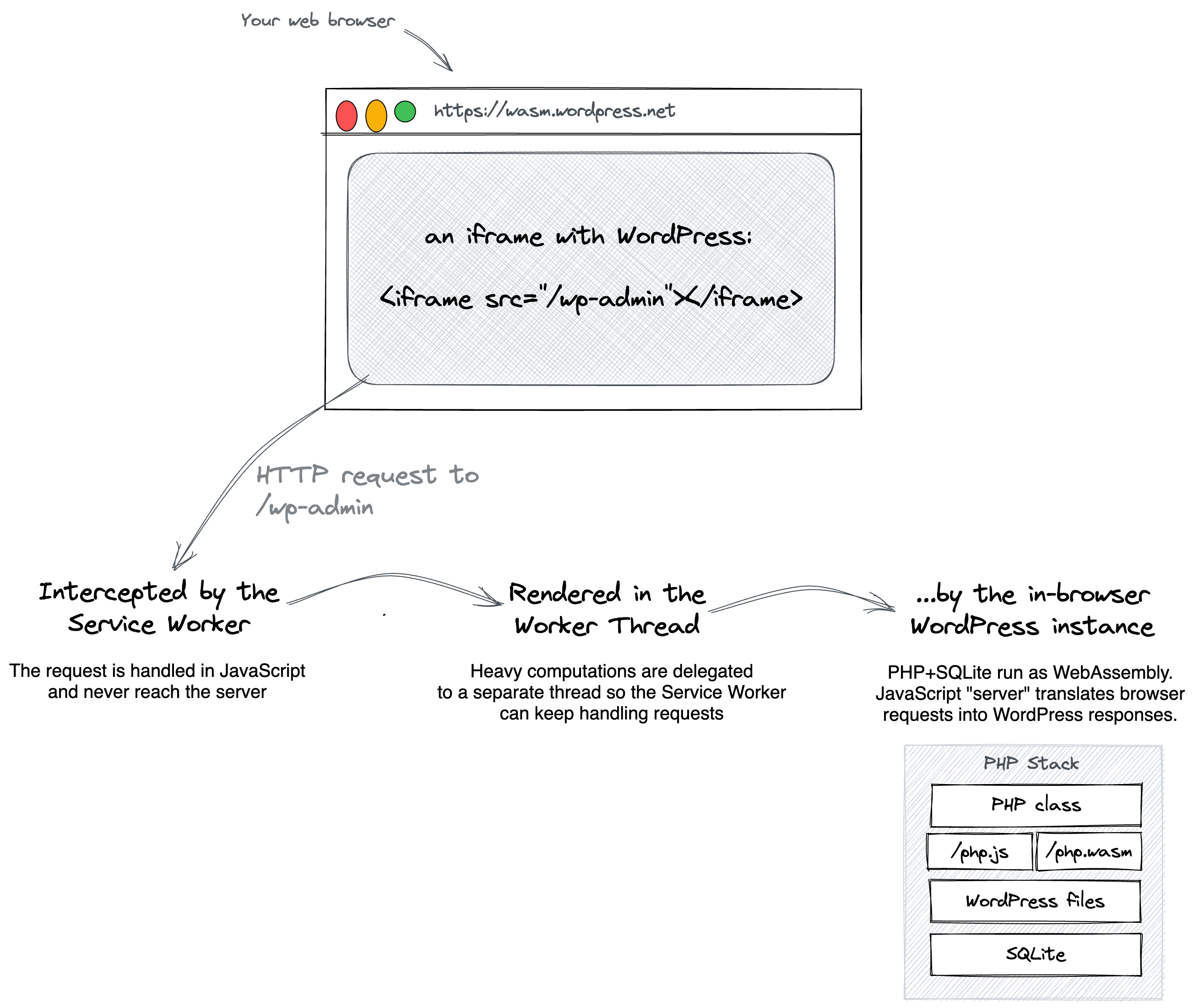Service Workers
A Service Worker is used to handle the HTTP traffic using the in-browser PHPRequestHandler.
Imagine your PHP script renders the following page in the iframe viewport:
<html>
<head>
<title>John's Website</title>
</head>
<body>
<a href="/">Homepage</a>
<a href="/blog">Blog</a>
<a href="/contact">Contact</a>
</body>
</html>
When the user clicks, say the Blog link, the browser would normally send a HTTP request to the remote server to fetch the /blog page and then display it instead of the current iframe contents. However, our app isn't running on the remote server. The browser would just display a 404 page.
Enter Service Workers – a tool to intercept the HTTP requests and handle them inside the browser:

Service Worker setup
The main application living in /index.html is responsible for registering the service worker.
Here's the minimal setup:
/app.js:
import { registerServiceWorker } from '@php-wasm/web';
function main() {
await registerServiceWorker(
phpClient,
"default", // PHP instance scope
"/sw.js", // Must point to a valid Service Worker implementation.
"1" // Service worker version, used for reloading the script.
);
}
You will also need a separate /service-worker.js file that actually intercepts and routes the HTTP requests. Here's what a minimal implementation looks like:
/service-worker.js:
import { initializeServiceWorker } from '@php-wasm/web';
// Intercepts all HTTP traffic on the current domain and
// passes it to the Worker Thread.
initializeServiceWorker();